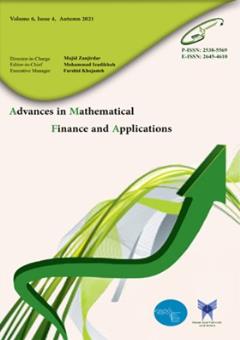Forecasting Influential Factors in Preventing Tax Evasion Through a Lemur Optimization Approach Utilizing a Perceptron Neural Network
Subject Areas : Financial Mathematics
Saeed Aghaei
1
,
Bahareh Banitalebi Dehkordi
2
![]()
1 -
2 -
Keywords: Tax Evasion, Prevention, Lemur Optimization , Perceptron Neural Network ,
Abstract :
Taxes serve as a vital source of funding for governments and significantly influence economic growth and income distribution, which varies based on a country's level of development and economic framework. Recently, researchers have introduced methods to identify effective factors in preventing tax evasion. Most of these methods rely on basic techniques such as regression, structural equations, and non-intelligent methods that cannot effectively analyze the relationship between the values of the variables involved in this field. Therefore, in this study, we introduce a method that leverages artificial intelligence techniques, specifically a meta-heuristic optimization approach and a perceptron neural network. This method effectively analyzes the nonlinear relationships within the data while addressing both the intrinsic and extrinsic aspects of the data dimensions simultaneously. The research sample consists of 25 experts from the Tax Affairs Organization, and the study was conducted in the year 2022. The results indicate a high prediction accuracy of approximately 98%. Additionally, it highlights the significant role of various factors contributing to tax evasion, including income concealment, money laundering, economic crises, political trust, the weaknesses, and complexities of tax laws and regulations, inadequate clarification of tax laws, contradictions in legal tax articles, administrative bureaucracy, and an inefficient tax structure.
[1] Dyreng SD, Hoopes JL, Wilde JH. , Public pressure and corporate tax behavior, Journal of Accounting Research, 2016;54(1): 147-86.doi: https://doi.org/10.1111/1475-679X.12101.
[2] Beasley MS, Goldman NC, Lewellen CM, McAllister M., Board risk oversight and corporate tax-planning practices, Journal of Management Accounting Research, 2021;33(1): 7-32.doi: https://doi.org/10.2308/JMAR-19-056.
[3] Rego SO, Wilson R., Equity risk incentives and corporate tax aggressiveness, Journal of Accounting Research, 2012;50(3):775-810. doi: https://doi.org/10.1111/j.1475-679X.2012.00438.x.
[4] Bourton S., A critical and comparative analysis of the prevention of tax evasion through the application of law and enforcement policies in the United Kingdom and United States of America: University of the West of England; 2021. doi: https://doi.org/ 10.4324/9781003333227.
[5] Widuri R, Mangoting Y, Sadjiarto A, Stephanus T., Preventing Tax Evasion: The Moral Strength of Taxpayers and The Power of Tax Authorities, Journal Akuntansi dan Keuangan. 2023;25(2): 91-100.doi: https://doi.org/10.9744/jak.25.2.91-100.
[6] Kuzmenko VV, Glotova II, Tomilina EP, Kuzmenko IP, Fedorenko IV, Assessment instruments of eco-nomic feasibility of tax transformations, Asian Social Science. 2015 Aug 1;11(19):298. doi: http://dx.doi.org/10.5539/ass.v11n19p298.
[7] Mousavi jahormi YT, Farhad, The tax recognition system in an ideal tax system, Tax Research,2007; 2:31-52. (in persion). doi: http:// doi.org/ taxjournal.ir/article-1-138-fa.html.
[8] Aghaei S, Banitalebi Dehkordi B, Jafari Dehkordi HR. Presenting a model to prevent tax evasion, from the perspective of the employees of the country's tax affairs organization, International Journal of Non-linear Analysis and Applications, 2024;15(5):325-36. doi: https://doi.org/10.22075/ijnaa.2023.29630.4212.
[9] Shahyarpour S, Bani Talebi Dehkordi, Bahare, the effect of Friedman and Rosenman's personality typology model on the amount of tax recognition and collection, Financial and Behavioural Research Quarterly in Accounting,2021;1:60-80. doi: 10.30486/FBRA.2021.1940362.1031.
[10] Aghaei S., Dehkordi BB., Dehkordi HJ., Identify and prioritize effective factors for reducing tax evasion from tax affairs organization experts’ opinions using an analytical hierarchy process by drawing a decision tree, Int J Nonlinear Anal Appl In Press. 2024;1:15. doi: http://dx.doi.org/10.22075/ijnaa.2023.30867.4509.
[11] Dissanayake N, Damayanthi B. Factors Influencing Tax Evasion: The Perception of Sri Lankan Medium-Sized Taxpayers, Vidyodaya Journal of Humanities and Social Sciences. 2024;9(01). doi: http://doi.org/10.31357/fhss/vjhss.v09i01.01.
[12] Kimea AJ, Mkhize M, Maama H., The sociocultural and institutional factors influencing tax avoidance in sub-Sahara Africa, Cogent Business & Management, 2023;10(1):2186744. doi: https://doi.org/10.1080/23311975.2023.2186744.
[13] Ch SN, Chaudhary SI., A Recap of the Factors affecting Tax Evasion: Pakistan's Environment, Paki-stan Social Sciences Review, 2023;7(4):68-75. doi: https://doi.org/10.35484/pssr.2023(7-IV)07.
[14] McGee RW, Shopovski J, Bolek M., Factors Influencing Tax Evasion from a Global Perspective in the Light of Gender. Robert W McGee, Jovan Shopovski and Monika Bolek, Factors Influencing Tax Evasion from a Global Perspective in the Light of Gender, Journal of Finance and Financial Law [Finanse I Prawo Finansowe]. 2022;35(3):9-26. doi: https://doi.org/10.18778&#.
[15] Rodriguez-Nieto JA, Mollick AV., The US financial crisis, market volatility, credit risk and stock returns in the Americas, Financial Markets and Portfolio Management, 2021;35(2):225-54. doi: https://doi.org/10.1007/s11408-020-00369-x.
[16] Hunt RA, King M., The intrinsic-extrinsic concept: A review and evaluation, Journal for the scien-tific study of Religion,1971:339-56. doi: https://doi.org/10.2307/1384780.
[17] Abasi AK, Makhadmeh SN, Al-Betar MA, Alomari OA, Awadallah MA, Alyasseri ZAA, et al. Lemurs optimizer: A new metaheuristic algorithm for global optimization, Applied Sciences, 2022;12(19):10057. doi: https://doi.org/10.3390/app121910057.
[18] Yilmaz AS, Özer Z., Pitch angle control in wind turbines above the rated wind speed by multi-layer perceptron and radial basis function neural networks, Expert Systems with Applications, 2009;36(6):9767-75. doi: https://doi.org/10.1016/j.eswa.2009.02.014.
[19] Zanjirdar, M., Madahi,Z., Kasbi,P., Comparative analysis of sticky SGA costs and cost of goods sold: Evidence from Tehran Stock Exchange, Management Science Letters,2014;4(3): 521-526
[20] Mohamadi,M., Zanjirdar,M., On the Relationship between different types of institutional owners and accounting conservatism with cost stickiness, Journal of Management Accounting and Auditing Knowledge, 2018;7(28): 201-214
[21]Zanjirdar,M., Khojasteh,S. , The impact of investors’ herding behavior on the stock returns using Huang and Solomon model, Quarterly Journal of Fiscal and Economic Policies, 2017;4(15): 115-134


